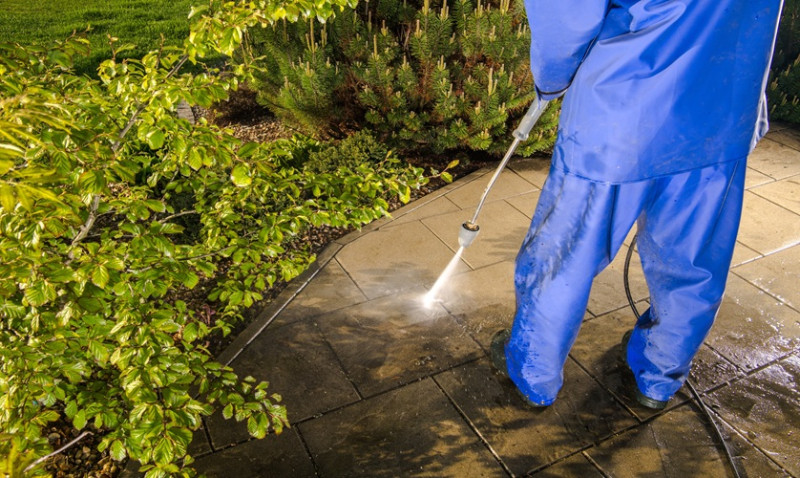
When it comes to maintaining the performance and longevity of heating, ventilation, and air conditioning (HVAC) systems, one crucial yet often overlooked component is the condensate drain line and pan. Whether you're a DIY homeowner, a budding interior designer, or a seasoned tradesperson, keeping these elements clean is essential for both system efficiency and indoor air quality. In this post, we’ll guide you through the cleaning best practices for condensate drain lines and pans to protect your property from potential water damage and ensure your HVAC system runs smoothly year-round.
What is a Condensate Drain Line and Pan?
Whenever your HVAC system cools air, it naturally collects moisture from the air through the process of condensation. This moisture gathers on the system’s evaporator coils and drips into the condensate pan. From there, it flows into the condensate drain line, which leads the water safely outside your home or into a designated drainage area.
The condensate pan acts as a catch basin, while the drain line is the pathway that disposes of the water. If either becomes dirty or clogged, it can cause water to back up, leading to leaks, mould growth, or even damage to your ceilings, walls, and floors.
Understanding how this system works is the first step in preventing unnecessary problems. Early signs of trouble include musty smells, water stains near your HVAC unit, or inconsistent system performance. If you notice these, it’s likely time for a condensate line inspection and clean-up.
Why Regular Cleaning is Essential
In the damp environment of a condensate pan, mould and algae can quickly begin to grow. Over time, this bio-growth can move into the drain line and cause clogs. Left unchecked, a blocked line can lead to property damage, poor indoor air quality, and expensive system repairs.
Regular cleaning prevents blockages, reduces the risk of mould spores spreading throughout your home, and improves HVAC efficiency. For professional tradesmen and architects, it's an essential consideration when designing or upgrading properties – especially in commercial properties or multi-residential buildings where moisture control is critical.
Furthermore, from a sustainability point of view, a well-maintained HVAC system consumes less energy, reducing your carbon footprint and energy bills – a win-win for everybody involved.
Tools and Materials You’ll Need
Cleaning your condensate drain and pan doesn’t require specialist tools, making it an ideal task for DIY enthusiasts and property maintenance teams alike. Here's a list of common tools and materials you'll need:
- Wet/dry vacuum or air compressor (for clearing clogs)
- Mild detergent or distilled white vinegar
- Soft bristle brush or pipe cleaner
- Bucket and cloths
- Protective gloves and goggles
- Bleach (optional, for persistent mould issues – use cautiously and ventilate area)
- Access to the HVAC unit and drain line exit point
Note: Always turn off the HVAC system before beginning any maintenance work to avoid accidents or further damage.
Step-by-Step: Cleaning the Condensate Pan
1. Turn off the power to your HVAC system at the mains for safety.
2. Locate the condensate pan. In most residential systems, it’s found beneath the indoor air handler.
3. Carefully remove any visible water. Use a wet/dry vacuum or absorbent towels. Empty the pan completely before cleaning.
4. Clean with soap and water. Using a mild detergent or vinegar solution and a soft brush, scrub away any mould, dirt, or biofilm buildup in the pan.
5. Rinse thoroughly. Remove any soapy residue, then dry the pan using a clean cloth.
6. Disinfect if needed. If persistent mould is present, use a diluted bleach solution (1 part bleach to 3 parts water) and ensure the space is well-ventilated during use.
Step-by-Step: Cleaning the Condensate Drain Line
1. Find the access point. This is usually a small T-shaped vent with a removable cap near the air handler.
2. Flush with vinegar or hot water. Pour about one cup of white vinegar or hot water through the drain access port. Let it sit for around 30 minutes to break down debris and biological growth.
3. Flush system completely. Follow up with warm water to push the loosened debris through the line to the outside.
4. Use a wet/dry vacuum if blocked. If the flow is sluggish or stopped altogether, apply suction at the outdoor end of the drain line to remove the obstruction.
5. Refit all components once flushing is complete, and turn the HVAC system back on. Monitor over the next few hours for any leaks or drainage issues.
How Often Should You Clean?
As a general rule of thumb, you should clean your HVAC condensate pan and drain line at least once every 3 to 6 months. If you live in a particularly humid area of the UK or your system runs constantly – such as in commercial spaces or during peak summer months – monthly maintenance is advisable.
For property managers and professional tradesmen servicing rental or commercial buildings, incorporating condensate line cleaning as part of scheduled seasonal maintenance will drastically reduce service calls and repair costs.
| Type of Property | Recommended Cleaning Frequency |
|---|---|
| Standard Residential Home | Every 3–6 months |
| Vacation Home (seasonal occupancy) | Before and after each season of use |
| Commercial Office or Retail Space | Monthly |
| Multi-unit Residential (flats/blocks) | Quarterly per unit or as per service plan |
Prevention Tips to Minimise Cleaning
Prevention is better than cure, especially when it comes to water damage. Here are a few expert tips to keep your condensate system running trouble-free between cleanings:
- Install an inline drain line trap or a float switch to shut the system off if a blockage is detected.
- Use algaecide tablets in the condensate pan during high humidity months.
- Make regular HVAC filter changes – dirty air filters increase moisture and dirt on coils, leading to pan overflows.
- Ensure the drain line has a downward angle for adequate flow away from the HVAC unit.
When to Call a Professional
While most UK homeowners and DIY enthusiasts can tackle basic cleaning, there are times where professional help is necessary. If you’re dealing with repeated clogs, water leaks, poor airflow, or visible mould growth impacting surrounding building materials, it's important to contact an HVAC service technician.
Architects and interior designers working on renovations or new builds should also consult with mechanical engineers to ensure system access and drainage designs allow for easy maintenance and servicing over time.
Conclusion
Taking the time to regularly clean and inspect your HVAC’s condensate drain line and pan is a small investment that yields big returns – from improved system performance to avoiding costly water damage. Whether you’re a DIY homeowner, property developer, or building professional, following these best practices will help you create safer, healthier, and more sustainable environments across your projects.
Got questions about HVAC maintenance or looking for trade-recommended products to simplify cleaning? Explore our full range of HVAC accessories and guidance in our online shop or get in touch with one of our UK-based specialists today.






